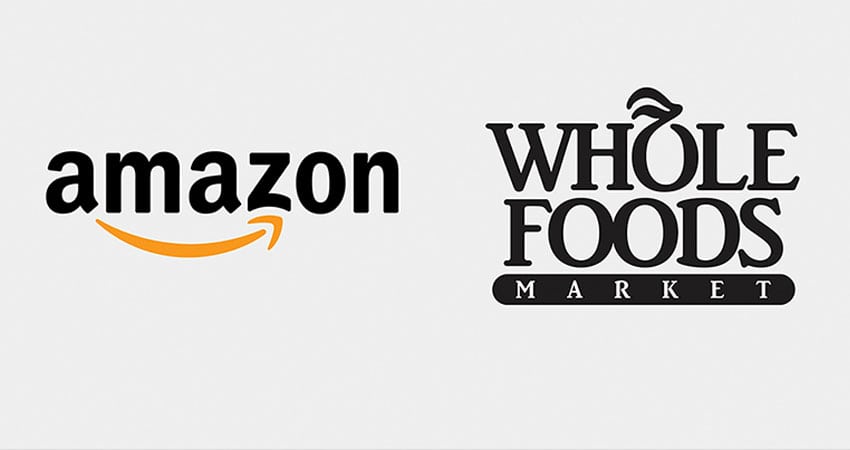With Alexa now serving grocers as breakfast for Bezos, have we forgotten that Walmart has had their lunch as the #1 grocer since the turn of the century? What will it take for today’s grocers to keep a seat at the adult dinner table? And is this seat dependent on beating the titans or staying ahead of remaining, traditional competitors?
Battle of the Titans
The growth of Walmart in grocery occurred as the company experimented with hypermarkets drawing from the European experience before landing on the supercenter model in the late 1980s. The higher shopper frequency for food that feeds scale for the combined store, their advanced hard goods merchandising technology adapted for grocery and their leading supply chain platform created competitive advantage in grocery, an industry lagging far behind other retail categories in terms of web and technology investment.
The complex nature of food retail (frozen, refrigerated, perishable fresh, bulk) put grocery at the bottom of the digital cart as a priority market. But along comes Amazon in urban markets where Walmart isn’t, bringing its digital leadership in much the same way as Walmart: Frequency, technology and supply chain. Walmart saw the future and blinked, buying Jet.com in the hope of succeeding in ecommerce after repeated digital disappointments.
While Amazon’s tender for Whole Foods is indeed a pitched battle with Walmart, the digital and physical squeeze play will grab share primarily from the rest of the grocery landscape, if history is a guide. We have a model in the consolidation of the DIY industry, where Home Depot and Lowes have split the North American market, leaving specialty and smaller format players battling for the remaining market share.
Creating a Survivable Future
Grocers need to take a hard look at their strategies and assets. Most have been content to play the local game, believing the traditional convenience of local stores would offset the buzz of urban and other digital food concepts. They also trusted that the complexity of the food supply chain would not succumb to digital advantage and that customers would remain loyal (after all, they all have our loyalty card, right?).
Can these grocer’s assets be converted into advantages to reverse the erosion of their market share? Are they capable of changing strategies and executing their own digital transformation? If both are true, do they have the sense of urgency after decades of delay in seeing their fate?
7 Key Assets in Grocers’ Competitive Storehouse
Data on customer shopping patterns: While they have not harvested loyalty data like major ecommerce players have, they still own the data as well as 50% to 70% of the spend of loyalty supermarket customers, according to Precima.
Local, physical stores acting as hub: Amazon is expected to spend $13.7 billion for access to physical retail, something grocers already have. Grocers are better positioned for full-range online grocery in the suburbs even if Amazon leads in urban markets.
Food and CPG brand partners: Amazon’s and Walmart’s buying clout threatens brands but retailer collaboration on product content and private label is mutually beneficial, even if the two titans try to disrupt with their own product data and brand plays.
Digital threat as a motivator: Delay in digital is no longer an option (unless you sell retail real estate) but lack of prior investment in ecommerce limits a grocer’s write-offs. An advanced content and commerce platform preserves a seat at the omnichannel table.
Low margins in grocery: The grocers’ challenge is a barrier for new entrants. Last year, overall retail margins fell 14.2% as ecommerce share reached 15.5% of sales, according to the Wall Street Journal. Grocers run with thin margins but the key is translating to food ecommerce as it grows.
SMB market is open for business: A third of the grocery market is served by small and medium businesses that are slowest in adopting digitization. Grocery chains have room to expand if they develop non-urban ecommerce models.
Challenging Amazon: At 22%, U.S. DIY retailer ecommerce growth exceeds Amazon’s 2017 rate; the 6% ecommerce share of grocery puts European hypermarkets far ahead. Unique, digitally enabled services, recipes and click and collect can create advantage.
Amazon’s goal is to become a top five grocery retailer with $30 billion in the $800 billion grocery market by 2025, according to a report in Bloomberg News. Over the past decade, it has created many online concepts for grocery items: Amazon Fresh, Amazon Pantry, Prime Now, Subscribe & Save, Dash Buttons, Amazon Go and now the Whole Foods deal. Contrary to the “steamroller” narrative about Amazon, it tells you they are struggling to solve online grocery and have conceded that they need physical stores.
Grocers understand the challenge they face in mastering retail stores. And we know that it isn’t until online sales hit 20% of all purchases in a given retail category that the Amazon growth surge occurs, according to research firm L2. Its 2025 goal gets them nowhere near that level. So despite the news headlines and #AmazonWins commentary, it’s not over.
Carpe commercium digitalis. Seize the digital store – before you lose the physical one.
Rick Chavie is CEO of EnterWorks

